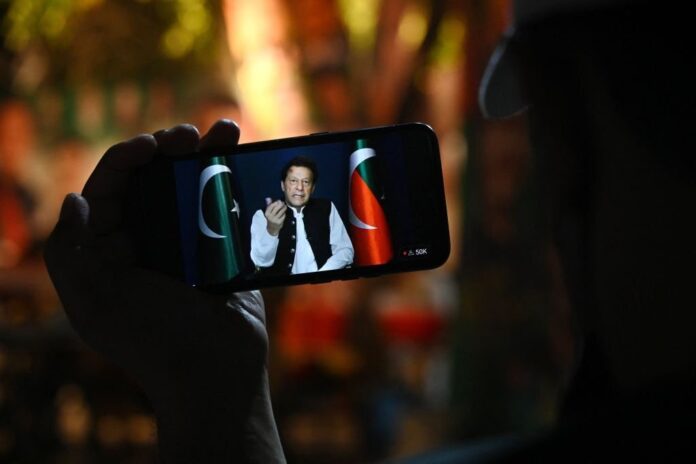ISLAMABAD: The arrest of former prime minister Imran Khan on Tuesday has shown how quickly his fervent loyalists can mobilise in large numbers.
Within hours of his detention, protestors torched vehicles and buildings, and attacked police and military facilities to express their fury over the treatment of the 70-year-old opposition leader.
Khan’s supporters have emerged as a major force, challenging the authority of the government and military, aware that they can shift the political balance through unrelenting pressure.
Although Khan has since been released from detention, it’s clear his supporters are ready to stay on the streets. Here’s a look at who they are and what’s driving them:
WHAT IS IMRAN KHAN’S APPEAL?
Khan has been a star in Pakistan for decades. As an athlete, in 1992 he led the country to its only World Cup victory in cricket, a massive sport in South Asia. That made him a hero to tens of millions of people before he even entered politics.
He founded Pakistan’s first cancer hospital, named after his mother, and ventured into philanthropy. His anti-corruption mantra is a hit in a country riddled with graft. And he has claimed he is the only leader who can stand up to the West and, in particular, the United States. It’s a popular narrative in Pakistan, where resentment of foreign involvement in domestic matters is deep-seated.
WHO ARE HIS SUPPORTERS?
Khan’s appeal spans social classes. Loyalists include young educated people without links to the two main political dynasties, the Sharifs and the Bhuttos. He also appeals to the diaspora and illiterate people in rural areas who have no access to social media or the Internet.
Unifying these groups is Khan’s message about challenging the elites and the status quo. He feeds his supporters’ sense of disenfranchisement. Men, women, young and old travel by the thousands to hear him speak at open-air rallies.
His support among people in their 20s and 30s explains his party’s dominance of social media, especially Twitter. Most of his power base lies in Punjab and Khyber Pakhtunkhwa.
HOW IS THIS OUTBREAK OF VIOLENCE DIFFERENT?
Neither this week’s violent clashes with law enforcement nor the mass arrest of activists and leaders from Pakistan Tehreek-i-Insaf (PTI) have deterred his followers. They say they will not allow harm to be done to Khan, and swear to take revenge against anyone daring to cross what they call their red line, in this case his arrest.
This level of violence hasn’t been seen since 2007, when former prime minister Benazir Bhutto was assassinated and her followers rampaged for days. The suspension of social media and mobile internet hasn’t stopped Khan’s supporters from turning out in the thousands.
WHAT HAPPENS NEXT?
The turmoil this week has placed the government, security forces and judiciary in a tough position.
While Khan’s supporters haven’t brought Pakistan to a standstill, they have disrupted daily life. Educational institutions have shuttered temporarily, consumer spending has fallen as people stay home, the industry has slowed, and daily governance has ground to a halt, while the suspension of mobile internet impacted services like food delivery and ride-hailing apps.
Khan’s arrest and what critics view as the government’s fixation on him have only stoked the passions of his loyalists, who say they are prepared to do anything to save him.























